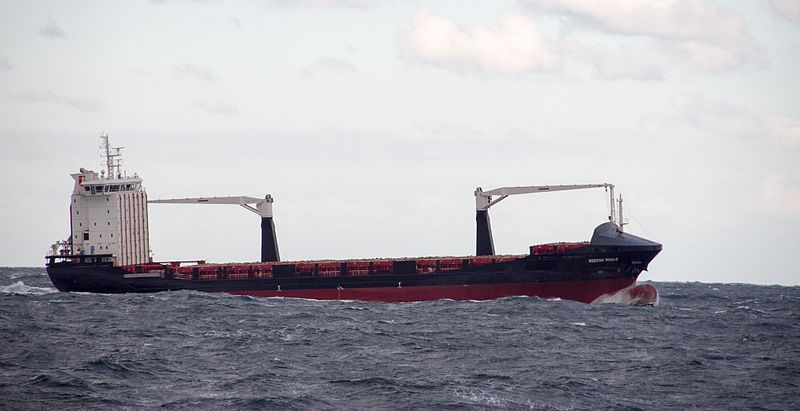
Photo by HOPSONROAD. License: CC BY-SA 4.0
Ship decks by their very nature are hazardous places to be. The combination of rolling walkways, wet surfaces and often crowded areas all meet to produce an area with a high likelihood of injury due to slipping. Whilst risk can never be completely eliminated, it can certainly be reduced and using deck coatings such as anti-skid surfaces can go some way in helping to achieve this.
Anti-Skid Surface Development:
When first developed in the 1930s, anti-skid surfaces were a simple mix of sand and epoxy tar. Development over the years can now see them being provided in a variety of forms and finishes, depending on the requirements of the market. For example, anti-skid surfaces on cruise ships need to be aesthetically pleasing, blend into the surroundings and be almost unnoticeable to the untrained eye. At the opposite end of the spectrum, anti-skid surfaces on working ships (such as those used in the oil and gas industry) can afford to be a little cruder, yet need to be more durable as they are exposed to further threats such as heat and use of heavy equipment upon them.
Anti-skid surfaces are now mandatory on ship walkways and marine decks in the oil and gas industry and are highly recommended in other sectors. Whatever the use of the ship, the following considerations need to be taken into account: maintenance, durability and practicality of use.
Maintenance:
Maintenance needs to be simple to carry out, ideally using just a roller brush or similar object and be able to be performed under stressful conditions, such as on a pitching deck. Due to the nature of its use and the elements, it is exposed to the durability of the anti-skid surface is paramount. Considerations such as the anti-corrosive quality need to be factored in when choosing the product. Scrutiny also needs to be applied to its practicality: a riverboat can afford to dock in order to make any repairs to its surfaces whereas a working ship cannot.
Despite the various challenges that coating a ship with an anti-skid surface can provide, it is of paramount importance to choose the correct product. The market is aware of this and is continually striving to better the products that they can offer. Most products, such as those using a resin mix, are now anti-rust, anti-wet and easy to clean as standard. Other recent developments include compounds that are quick to apply, hardwearing and heat resistant.
As awareness of health and safety continues to grow, so will the development of anti-skid surfaces. This will benefit not only the working ship sector but the tourist industry as well. Those onboard ships of all designs can look forward to ideas such as glow-in-dark surfaces, anti-ice coatings and inbuilt security systems all coming to fruition in the not too distant future.
